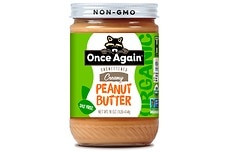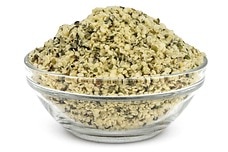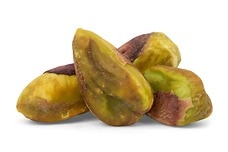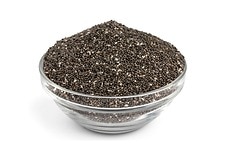Weight Loss Shakes
Despite hundreds of diet books and celebrity weight loss tips, Americans still have a weight problem. Recent data from the Centers for Disease Control and Prevention show that 40% of women and 35% of men are obese, while many more are overweight (Flegal et al., 2016). Our dietary choices have a lot to do with our difficulty to shed excess weight. Learning effective and sustainable diet strategies is the best way to promote healthy weight loss. Drinking weight loss shakes can be a great way to achieve your weight loss goals.
How a Shake Can Promote Weight Loss
When it comes to weight loss, the formula is simple: eat fewer calories than your body uses, and you will lose weight. When it comes to putting this advice into action, however, things get more tricky. Restricting caloric intake too much will throw the body into a sort of “starvation mode” in which it conserves energy rather than burning excess fat (Gunnars, 2015).
Particularly when you drink a shake first thing in the morning, meal replacement drinks can be an excellent way to rev up your body’s metabolism (Katz, 2015). Getting protein and carbohydrates early in the morning sends a “wake up and get moving” message to your body that stimulates fat burning. This results in a higher metabolism throughout the day, promoting healthy and sustainable weight loss.
How to Evaluate the Nutritional Value of a Weight Loss Shake
There are three major macronutrients in the foods we eat: carbohydrates, proteins, and fat. When it comes to weight loss shakes, you should evaluate the content of all three. Carbohydrates are the body’s primary source of energy (McKinley Medical Center, 2012); they provide a rapid energy boost. When carbohydrates are unavailable, your body will burn fat. Finally, protein is necessary for repair of cells and tissues. Getting enough protein also keeps you feel full and protects against dramatic swings in blood sugar (McKinley Medical Center, 2012). This ensures that you will not succumb to cravings for unhealthy foods soon after drinking your shake.
In general, a healthy weight loss shake contains a carbohydrate to protein to fat ratio that is around 1:1:1, although it is okay if you have slightly more carbs than fat or protein (Smith, 2015). Aim for 15 to 20 grams of carbohydrates and an equivalent amount of protein and fat. Reading nutritional labels on commercial weight loss shakes can help you find one with this balance of ingredients.
Evaluating Homemade versus Commercial Weight Loss Shakes
When it comes to choosing a weight loss shake, there is no one right answer. There are many commercial weight loss shakes that taste great and contain a healthy balance of ingredients. Plus, it is tough to beat the convenience of grabbing a pre-packaged weight loss shake. The downside is that some commercial brands contain a lot of added sugar, chemical additives or preservatives, or other ingredients that are generally unhealthy.
Many people prefer to stay on the safe side and make weight loss shakes at home. This guarantees that you know exactly what has gone into your shake. When making a homemade weight loss shake, consider the ratio of carbohydrates and protein. A basic recipe includes a banana, ½ cup of yogurt, one serving of protein powder, and a few ice cubes. From there, however, you can add a variety of ingredients to enhance the nutritional value of your shake. Fresh berries, goji berry powder, green tea matcha powder, peanut butter, hemp seeds, coconut oil, spinach, flaxseeds, and pistachios all make excellent additions to a weight loss shake.
Considerations When Using Weight Loss Shakes for Weight Management
Drinking a weight loss shake can be a convenient and effective way to refuel your body without adding excess calories. However, weight loss shakes are not intended to replace a nutritious, balanced diet. Substituting a weight loss shake for a single meal (usually breakfast or lunch) can be a healthy choice. Drinking multiple weight loss shakes without eating much else is a recipe for nutritional deficiencies.
To use weight loss shakes in a healthy manner, make sure you eat healthy and balanced meals the rest of the time. This includes a focus on whole fruits and vegetables, lean protein from non-animal sources such as nuts, seeds, or soy products, and complex carbohydrates from whole grain products. If you add a weight loss shake to an otherwise healthy diet, you will be much more successful at achieving your weight loss goals.
Healthy Weight Loss Shake Recipes
The following recipes provide easy ways of throwing together your own weight loss shakes in just a few minutes. Try these wholesome drinks today!
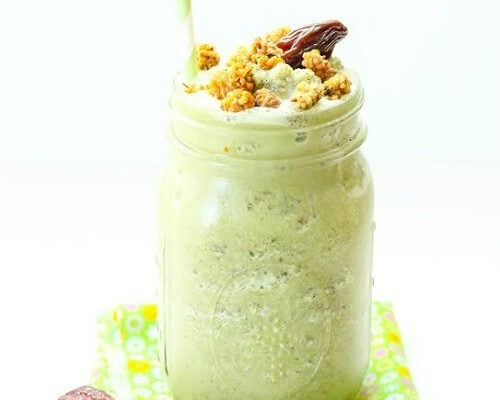
Matcha Green Tea Smoothie Recipe {gluten-free, vegan}
This scrumptious smoothie pairs the superb savor of matcha with the sweetness of almond milk, dates, and mulberries for a delightful beverage that offers a near 1:1 ratio of protein to fat with a few additional grams of carbohydrates.
Ingredients: Almond milk, matcha green tea powder, hemp protein powder, almond flour, dried mulberries, pitted dates, flaxseed meal, ice cubes, stevia powder.
Total Time: 5 minutes
| Yield: 4 smoothies
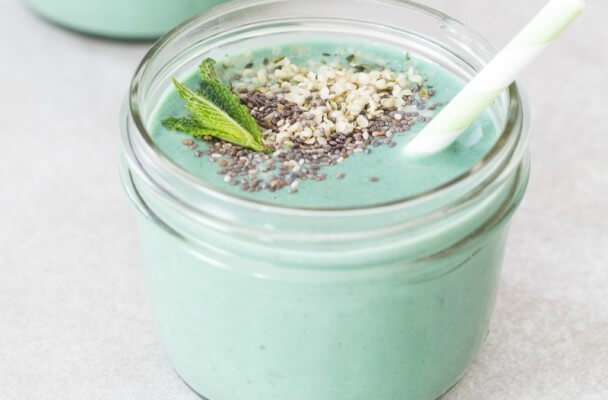
Protein-Packed Detox Smoothie Recipe {vegan}
While the ratio of this beverage weighs heavily on carbohydrates and protein, the nutritional benefits it offers include 20% of the Daily Value (DV) for potassium, more than 40% of the DV for iron and upwards of 60% of the DVs for vitamin A and calcium.
Ingredients: Almond milk, frozen banana, spirulina, hemp protein powder (optional), fresh mint, chia seeds, hemp hearts.
Total Time: 5 minutes
| Yield: 2 servings
Ingredients for Healthy Weight Loss Shakes
Try adding these wholesome foods to your beverages to round out their nutritional content for that perfect 1:1:1 ratio of fats, protein, and carbs.
Healthy Eating
- Healthy Snacks
- Healthy Highlights
- 5 Uses for Cacao Powder
- 5 Ways to Eat Farro
- 6 Best Gluten-Free Foods
- Alcohol and the Body
- Almond Flour Recipes
- Anti-Aging Superfoods
- Beat the Afternoon Slump
- Benefits of a Plant-Based Diet
- Benefits of Baobab
- Benefits of Cashews
- Benefits of Coconut Oil for Hair
- Benefits of Coconuts
- Benefits of Dates
- Benefits of Fenugreek
- Benefits of Garcinia Cambogia
- Benefits of Goji Berries
- Benefits of Kale Chips
- Benefits of Monk Fruit Sweetener
- Benefits of Peanuts
- Benefits of Pecans
- Benefits of Pistachios
- Benefits of Pumpkin Seeds
- Benefits of Spelt Flour
- Benefits of Steel Cut Oats
- Benefits of Sunflower Seeds
- Benefits of Tiger Nuts
- Benefits of Turmeric
- Benefits of Walnuts
- Benefits of Wheatgrass
- Best Food Fads
- Cacao vs Cocoa
- Caffeine-Free Energy Foods
- Chocolate That's Good for You
- Diet vs. Exercise
- Fat Burning Foods
- Food Myths Debunked
- Foods for Bone Density
- Foods for Colon Health
- Foods for Healthy Hair
- Foods for Healthy Skin
- Foods to Help Sleep
- Foods to Reduce Stress
- Green Tea Benefits
- Healthy Baking Flours
- Heart Healthy Habits
- High Protein Health Risks
- How to Boost Your Metabolism
- How to Lose Weight While Aging
- How to Throw a Vegan BBQ
- Kaniwa vs Quinoa
- Little Health Foods
- Low-Carb: Fad or Friend?
- Making Healthier Desserts
- Mediterranean Diet Meal Plan
- Natural Beauty Products
- Nuts for Weight Loss
- Preparing Vegan Meals
- Preventing Muscle Degeneration
- Rare Superfoods
- Reduce Sugar Intake
- Save Time By Going Vegan
- Smarter Snack Swaps
- Smoothie Ingredients
- Soy Protein vs Whey Protein
- Starting a Plant-Based Diet
- Steel Cut vs Rolled Oats
- Sugar Substitutes
- Vegan Proteins
- Vegan Substitutions for Fall Recipes
- Why Go Vegan
- Healthy Meals
- Healthy Recipes
- Sports Nutrition
- Vitamins, Minerals & Nutrients


